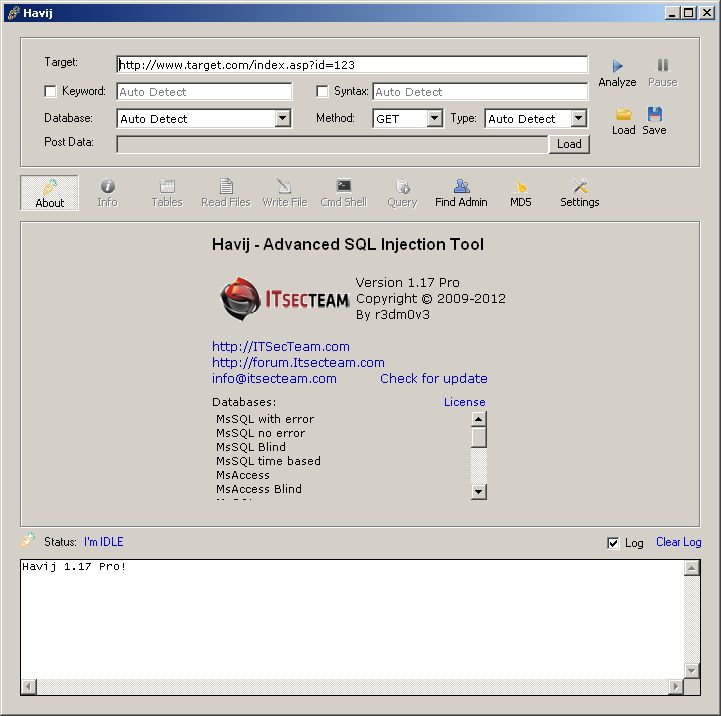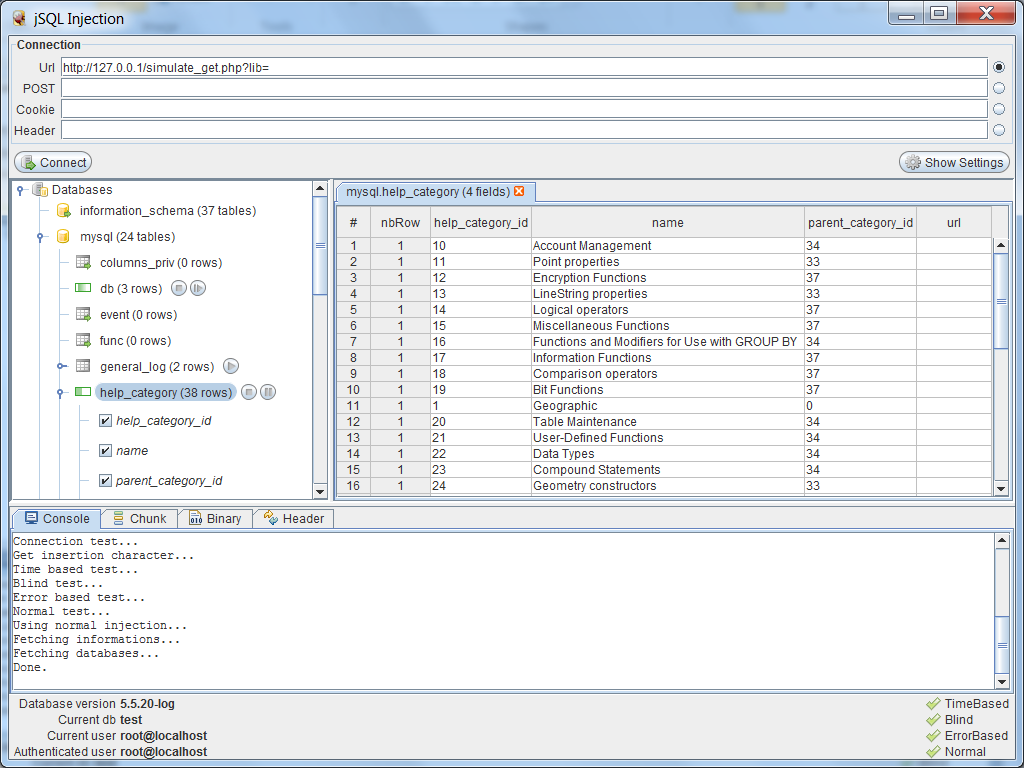2020. 2. 26. 12:59ㆍ카테고리 없음
Anti SQL Injection Tool What’s SQL InjectionA SQL Injection attack occurs when the user input goes unchecked for validation.


Quite recently, hackers used a SQL injection attack to break into the and steal credit card data. Although the same hackers used network sniffers to capture card data from Heartland Payment Systems, it was a that led to the initial compromise of their servers, allowing the attackers to plant their malware. SQL injection attacks represent a serious threat to any website with a database backend and require nothing more than port 80 to be open, often working even if a system's patches are up to date. Security experts point to online advertising campaigns that distributed faulty code to affiliates as the source of.Although the risk from SQL injection attacks has been well documented, you can see they are still providing hackers with plenty of opportunities to access data or take control of a compromised machine. The methods behind these attacks are easy to learn, and hackers have automated them to expedite the process of finding and exploiting vulnerable websites.
This means that unless you take protective measures, like employing application security best practices or using SQL injection detection tools, the site is much more likely to be uncovered and exploited.What is SQL injection?SQL injection is a form of attack that takes advantage of applications that generate SQL queries using user-supplied data without first checking or pre-processing it to verify that it is valid. The objective is to deceive the database system into running malicious code that will reveal sensitive information or otherwise compromise the server. By modifying the expected Web application parameters, an attacker can submit SQL queries and pass commands directly to the database.Many webpages take input from users, such as search terms, feedback comments or username and password, and use them to build a SQL query which is passed to the database. If these inputs are not validated, there is nothing to stop an attacker inputting malicious code, for example, that could instead instruct the database to delete a specific table of client records.Getting the SQL syntax right is not necessarily so simple and may require a lot of trial and error, but by adding additional conditions to the SQL statement and evaluating the Web application's output, an attacker can eventually determine whether, and to what extent, an application is vulnerable to SQL injection. If the code achieves an immediate result, it is an example of a first-order attack.
If the malicious input is stored in a database to be retrieved and used later, such as providing input to a dynamic SQL statement on a different page, it is referred to as a second-order attack. Second-order attacks can be very successful because once data is in a database it is often deemed to be clean and so is not revalidated prior to use.SQL injection prevention tipsA simple test to see if your site might be susceptible to SQL injection is to.enter the quote character (') in a Web form or query-based URL to see what type of error message you get. The trailing single quote will confuse the database if it is not handled correctly.SQL injection needs to be tackled on many levels, but the key defence is the use of parameterized stored procedures. This is where requests to the database are made using parameters and user-defined subroutines instead of building SQL commands using values supplied directly by a user.
Sql Injection Tools Linux
Parameters are not only type safe (ie they are in a correct format), but they greatly reduce the likely success of a SQL injection attack. If access to the data is only ever permitted via stored procedures, then permission for users to access data does not need to be explicitly given on any data tables.Even if you are using parameterized stored procedures, your application still needs to validate and sanitize all data inputs, whether it is supplied by your users, authenticated customers or read from a cookie.
This means checking that the data is of the correct type, length, format and within an expected range. Any data that is not well-formed and correct should be rejected.Many applications sanitize input by filtering out known unsafe characters such as '. Use search engines to filter through vulnerable Web servers. In this tip, Patrick Szeto explains how to keep your website off of the malware's radar.Having spent time ensuring your Web application is robust, you should also conduct a penetration test.